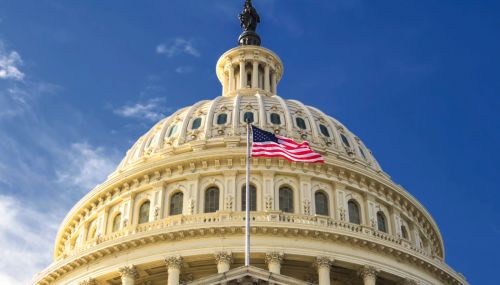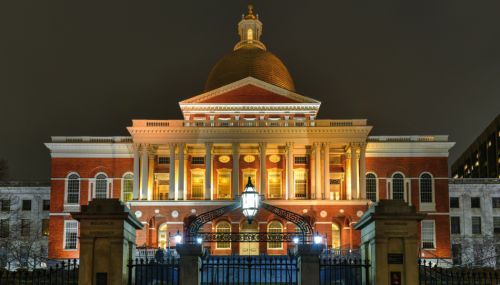All
Dropping Deadlines

When aspiration meets reality, reality often wins.
When is a deadline not a deadline? That’s the big question, as the federal government, states, and regional organizations create aggressive schedules with little chance of being met. Suddenly, as deadlines approach, metrics are described as “aspirational,” and messaging is twisted to “how far we’ve come,” rather than “how much we’re missing the mark.” It seems when aspiration meets reality, reality has the upper hand.
If you dig a bit, you can see the underlying real-world situations that are getting in the way of the lofty goals. Oil & Energy did just that, looking at some of the most aggressive policies to see where deadlines were being dropped.
It is a global issue. In fact, the U.N Environmental Programme subtitled its “Emissions Gap Report of 2023,” produced in advance of COP 28, with the devastating, “Broken Record: Temperatures hit new highs, yet world fails to cut emissions (again).” The report stated, “even in the most optimistic scenario considered in this report, the chance of limiting global warming to 1.5°C is only 14 percent, and the various scenarios leave open a large possibility that global warming exceeds 2°C or even 3°C.”
U.S. Targets
Nationally, the Biden Administration has set the goal for the government to be a net-zero contributor by 2050 by slashing emissions from operations and transitioning its fleets to all-electric cars and trucks. That would require a 50-52 percent reduction of domestic greenhouse gas emissions below 2005 levels by 2030. However, in its 2023 Annual Energy Outlook (it has not produced a 2024 edition), the Energy Information Administration predicted that U.S. energy-related carbon emissions would only decrease between 25 and 38 percent by 2030.
Why isn’t the U.S. going to hit the mark? The 2024 Offshore Wind Market Report notes that the country has 12 GW of offshore wind capacity, and that by 2030 will have 14 GW operation – far short of the Administration’s goal of 30 GW by 2030. While the report predicts that the country will reach 30 GW only three years later, it notes that there were serious problems with costs, availability, and infrastructure, which led to projects being canceled and delayed.
The Massachusetts Institute of Technology released a report in July 2024 that determined that the U.S. likely won’t be able to meet its climate goals or decarbonize the electric grid by 2050 unless it adopts additional reforms to speed the interconnection process.
Another national issue? Electric vehicles. In the real world, consumers are concerned about charging infrastructure, purchase price, actual driving distance per charge, and limited model availability. All this led to JD Power reporting that only 24 percent of shoppers are “very likely” to consider purchasing an EV, from 26 percent last year; and shoppers identifying as “overall likely” to consider an EV dropped three points to 58 percent.
RGGI Deadlines
In 2009, the Regional Greenhouse Gas Initiative (RGGI) was founded when northeastern states joined in a cooperative effort to reduce power section CO2 emissions through a regional, market-based, cap-and-trade program. The environmental activists were thrilled. Today, the RGGI is getting pushback from those same groups. RGGI is supposed to regularly assess the impacts on the program, and in February, 2021, announced it was initiating its Third Program Review. While results were supposed to take two years, RGGI later moved that deadline to January 2024. As calendar pages flipped well beyond the first month, the Acadia Center and other state environmental groups had had enough, and in July submitted individual letters the leaders of each state’s department of environmental protection (or equivalent), with local associations signing on.
The letter stated that, “It has been almost three and a half years since that announcement, and we, your constituents, have grown increasingly concerned with the lack of communication and engagement from the RGGI States and RGGI Inc. during this Third Program Review… So, in simple terms, our organizations respectfully ask: when should we expect the RGGI states to take action to complete the Program Review? Not only is there a need to clarify the Third Program Review schedule, but there is also a need for the RGGI states to respond, from a substantive point of view to the comments you solicited, and we provided. While the RGGI States were responsive to comments filed during this Program Review in October 2021, November 2021, and December 2021, we have received no response from the RGGI member states to our comments filed in March of 2023 and September 2023.”
Of course, just as all politics are local, all environmental policies are local as well. Governors are as likely to propose beyond-optimistic environmental policies as presidents, and just as likely to miss their marks. This is not a complete review of the status of all the regulations and standards currently in play (look for the Annual State Energy Update in our January/February issue), but a brief review of recent updates.
New York
New York’s 2019 Climate Leadership and Community Protection Act was a groundbreaking announcement that the Empire State would lead the way in reducing carbon emissions, and set one of the first flags for net-zero emissions by 2050. Of course, there were smaller targets along the way, with several set for 2024.
- January 1, 2024: regulations were supposed to be set so that the state would be able to achieve its core emissions targets. These have not been released. In December, 2023, the state released a pre-proposal for a cap-and-invest plan, but has not yet even issued draft rules for the program.
- June 1, 2024: The Department of Environmental Conservation was supposed to have produced a strategy to improve air quality in vulnerable communities. Now the Department will be holding “listening sessions” over the summer.
- July 1, 2024: Five years in, the state was supposed to publish an official progress report on all its renewable energy mandates. Earlier this year, the Department of Public Services announced that a draft would be released sometime in July and then undergo the required 60-day public comment period. As of this writing, the draft has not been presented.
- More deadlines will be approaching in 2025, but overall, it is determined unlikely that New York will hit the 2030 goal of a 40 percent emissions reduction from 1990 levels.
One can not discuss New York’s environmental activities without mention of the disastrous Congestion Pricing fiasco. After years of development and billions of dollars invested, the Congestion Pricing plan for Midtown Manhattan was set to launch at the end of June. At the last minute, Governor Hochul pulled a U-turn worthy of a yellow cabbie and pulled the plug indefinitely, despite previous announcements about the environmental and financial benefits of the program.
Vermont: Vermont’s Clean Heat Standard of 2023 aimed to reduce greenhouse gas emissions from heating systems by 40 percent by 2030. This plan is still under development, and has a 2025 “look back” to determine its feasibility. The Public Utility Commission is still working on its program to force heating fuel dealers to sell their customers less fuel or pay a compliance fee. While compliance costs will not be levied against fuel dealers until 2026, the fees and values of those credits will not be released until at least January 2025. It gets more complicated. In January of this year, while the administration was touting modeling scenarios that predicted they would successfully meet their first GHG reduction deadlines for 2025, members of the Vermont Climate Council were reporting that the discrepancy between the emissions levels from Vermont’s Greenhouse Gas Inventory from 2015-2020 and the emissions levels presented by ANR’s model for the same period cast serious doubt on the agency’s claim that Vermont is on track to meet its emissions reduction requirements for 2025.
Massachusetts: Massachusetts is still working on the Clean Heat Standard to be implemented by 2026. The state’s 2023 “annual report card” was described as showing “what we need to do and it’s a call to action.” The state had a goal of converting 100,000 homes to heat pumps by 2025, but had only recorded 30,000 at the time of the report. Will the state be able to convert another 70,000 homeowners in 18 months, or will this be another dropped deadline?
Rhode Island: Signed in 2021, Rhode Island’s “Act on Climate” mandated 45 percent emission reductions below 1990 by 2030, 80 percent by 2040, and net-zero by 2050. In 2020, an Executive Order was signed for advancing a 100 percent renewable electricity future for Rhode Island by 2030, and in 2022 the state enacted a Renewable Energy Standard of 100 percent by 2033. The state is not going to make those aggressive targets, according to the Acadia Center, an organization promoting a transition to a “low-carbon economy that uses advances in clean energy technology—not fossil fuels—to heat buildings, power vehicles, and generate electricity.” In an April, 2024, blog, the Acadia Center reports that, “While Rhode Island has seen recent policy wins in the electric and transportation sectors, the state is not on track to meet the mandated targets in the Act on Climate and lacks a plan to reduce emissions from buildings. Buildings in Rhode Island, specifically accounting for residential and commercial heating, are responsible for nearly 30 percent of our state’s greenhouse gas emissions.”
Connecticut: The Connecticut Department of Public Health released “State’s Latest Climate Report Card Shows Need to Accelerate Emissions Reductions to Meet 2030 Target,” in April. While the headline already points to a dropped deadline, the report goes further.
“In tracking progress toward the state’s statutory GHG emissions reduction targets, the report’s preliminary data shows that emissions increased in 2022 for a second consecutive year.
“While the state has made progress since 1990, there is work to be done to meet pollution reduction goals set by the legislature. While Connecticut met its goal for 2020 emissions set by Connecticut statute, an accelerated pace of reductions is needed to meet statutory medium- and long-term goals … In 2020, Connecticut met an emission-reduction goal set by the 2008 Global Warming Solutions Act. Reaching the next goal - 45 percent reduction in GHG emissions from 2001 levels by 2030 - requires an average reduction of 1.1 million metric tons of carbon dioxide equivalent (MMTCO2e) each year between 2022 and 2030. Connecticut has not yet achieved this rate.”
Renewable Liquid Heating Fuels Industry: How is the renewable liquid heating fuels (RLHF) industry doing with its own deadlines? Five years ago, the Providence Resolution set industry-wide goals to deliver a 15 percent reduction in GHG emissions by 2023, 40 percent by 2030, and net-zero carbon emissions by 2050. According to Dr. Tom Butcher of the National Oilheat Research Alliance (NORA), the RLHF industry has surpassed its goal of reducing GHGs 15 percent by 2023, achieving a nearly 26 percent reduction in greenhouse gas emissions through a combination of energy efficiency improvements and increased use of renewable fuels such as Bioheat® Fuel. According to Dr. Butcher, in order to meet the 2030 goals, most RLHF blends should be at least 29 percent biodiesel. Whether we meet that or not is up to the fuel retailer.
As stated earlier, this is not a comprehensive review of the status of current federal or statewide policies. Some states are on track to meet their goals, such as Maine and Pennsylvania. But as more “clean energy” policies fail to reach their targets, liquid fuel marketers have the opportunity to make a difference that will last several lifetimes, simply by increasing the level of biodiesel in their fuel.
Related Posts
 Jim Collura’s First Year as NEFI President and CEO
Jim Collura’s First Year as NEFI President and CEO
Posted on December 22, 2025
 NEFI-Backed National Energy Choice Legislation Advances
NEFI-Backed National Energy Choice Legislation Advances
Posted on December 22, 2025
 How Massachusetts’ Clean Heat Standard Could Transform Energy Dealer Economics
How Massachusetts’ Clean Heat Standard Could Transform Energy Dealer Economics
Posted on December 18, 2025
 Spotlight Sessions Illuminate Opportunities and Challenges
Spotlight Sessions Illuminate Opportunities and Challenges
Posted on September 19, 2025
Enter your email to receive important news and article updates.
